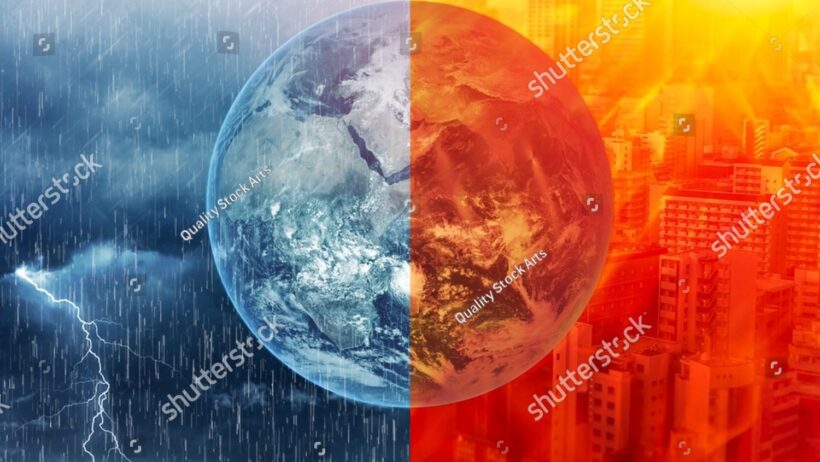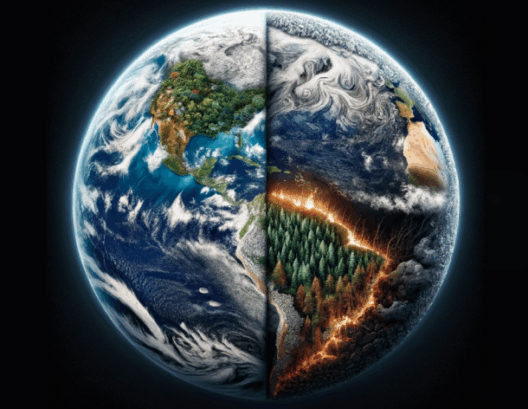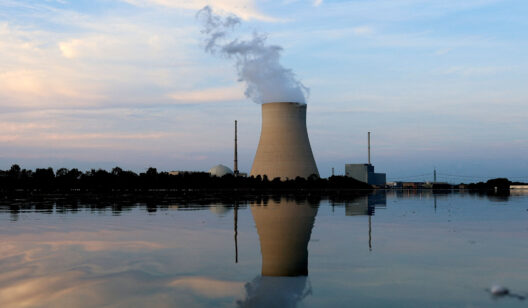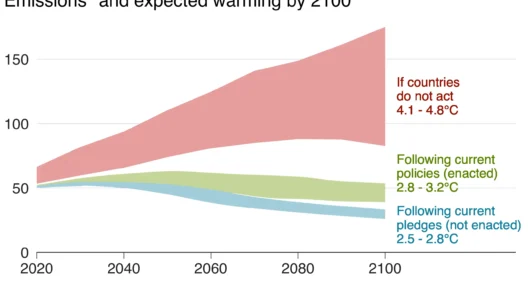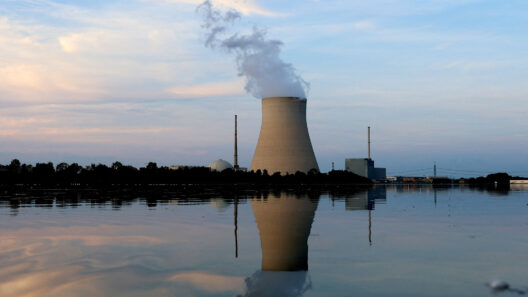Global warming, a pervasive force reshaping our planet, serves as a silent puppeteer that influences various climatic phenomena, particularly the periodic events known as El Niño and La Niña. These events are not mere weather anomalies; they are critical drivers of considerable climatic variations around the globe. To elucidate how global warming affects El Niño and La Niña, it is essential to first delve into their essence, traversing through the intricate web of oceanic and atmospheric interactions that govern these phenomena.
El Niño and La Niña are components of the El Niño-Southern Oscillation (ENSO), a complex interplay between ocean temperatures and atmospheric conditions across the equatorial Pacific. Picture the Pacific Ocean as a colossal reservoir of heat. During an El Niño event, warm water accumulates in the eastern Pacific, disrupting the typical upwelling of cold water and altering weather patterns worldwide. In contrast, La Niña features the opposite scenario, where colder-than-average sea surface temperatures prevail, invigorating upwelling and resulting in intensified trade winds. These oscillations, while natural, are increasingly influenced by the overarching threat of climate change.
The manifestation of global warming brings with it a two-edged sword: rising sea surface temperatures (SSTs) and shifting atmospheric conditions. The increased SSTs act as a catalyst, enhancing the intensity and frequency of El Niño events. With every degree of warming, the ocean’s ability to hold heat increases, exacerbating the conditions that trigger these phenomena. Models suggest that a warmer world will witness more severe El Niño episodes, akin to a storm that gathers momentum as it churns across the ocean.
Moreover, the effects of global warming extend beyond mere temperature fluctuation. The alteration of wind patterns due to changes in atmospheric pressure creates a domino effect. When examining the Pacific trade winds—previously steady and predictable—they now find themselves in a state of flux, characterized by unpredictability. During El Niño periods, these winds may slacken or even reverse, perpetuating the cycle of warming and further contributing to climate instability.
The impact of intensified El Niño events cannot be overstated. They have been linked to extreme weather patterns, such as droughts in Australia and floods in South America, disrupting ecosystems and human societies alike. The metaphor of a maestro conducting an orchestra comes to mind; El Niño, with its amplified reach, can create dissonance across continents, leading to catastrophic climatic chords that echo through agriculture, fisheries, and water supplies.
La Niña, while often seen as a counterbalance to El Niño, is not immune to the influences of global warming either. The intensified cold phases can lead to their own set of challenges, particularly as we witness a hyper-connected climate. Enhanced La Niña conditions, driven by shifted SSTs and wind dynamics, can provoke intense tropical cyclones in the Atlantic, exemplifying the interconnectedness of global weather systems. In a warming world, the gentle breezes of La Niña may also develop into fierce gales, illustrating the salient truth that climate change does not simply amplify one side of an equation but recalibrates the entire system.
Furthermore, the interplay between these phenomena extends into the realm of social and economic repercussions. Agriculture, as one of the most climate-sensitive sectors, bears the brunt of these fluctuations. The irregular oscillations can disrupt planting and harvesting schedules, leading to food insecurity. El Niño’s propensity for droughts can devastate crops, while La Niña’s inclination for excessive rainfall can render fields unplantable. The symbiosis between climate events and agricultural productivity underscores a poignant metaphor: the weather, like a capricious artist, can paint a landscape of abundance or scarcity in a single season.
As we navigate the complexities of a warming planet, it becomes imperative to explore adaptive strategies. To mitigate the adverse effects of altered El Niño and La Niña events, investment in climate-resilient agriculture is crucial. Farmers must cultivate techniques that embrace variability, such as crop diversification and water conservation practices. In this metaphorical garden of possibility, resilience takes root, allowing societies to weather the storms brought forth by an ever-changing climate.
The global implications are profound. As scientists endeavor to untangle the mysteries of ENSO in a warming world, the quest for accurate climate predictions becomes increasingly vital. Improved forecasting models, bolstered by enhanced computational capabilities and better data collection methodologies, can provide indispensable insights. They serve as navigational charts, guiding societies through the turbulent waters of climate variability.
Ultimately, the relationship between global warming and the cyclical nature of El Niño and La Niña is a complex narrative writ large across the tapestry of our planet. It is a story of transformation underpinned by heat and influenced by unseen hands. To understand this narrative fully is to grapple with our shared responsibility in addressing the climate crisis. Embracing renewable energy, reducing carbon footprints, and promoting sustainable practices are not mere options; they are imperatives if we are to safeguard our ecosystems and enhance resilience to the climatic whims of this unpredictable duo.
In conclusion, the phenomenon of global warming is intrinsically linked to the dynamics of El Niño and La Niña. As one influences the other, a perpetual cycle emerges that can disrupt global weather patterns and ecosystems. Recognizing this interconnectedness allows for a deeper understanding of climate change’s implications, urging humanity to act decisively in mitigating its impact. The time has come to heed the warnings offered by our planet and shift our trajectory toward a more sustainable future.


